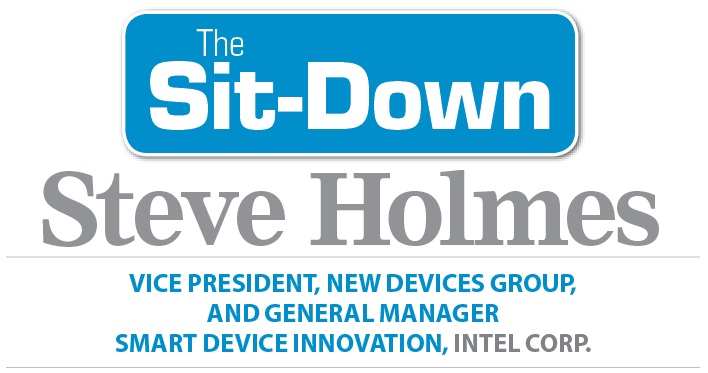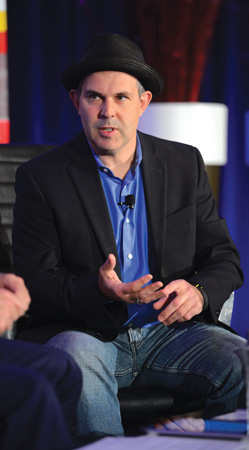People and Pop Culture
The Sit-Down: Steve Holmes, Intel Corp.
Are you using wearable technology? More and more people are, and an expert in the field talks about how it may affect sports businesses, athletes and fans.

W e really are just in the beginning [of wearable technologies]. Obviously the user adoption and user retention are two of the key things that you are seeing that shows that we are just starting.
 |
Photo by: MARC BRYAN-BROWN
|
If you look at smart phones as an example, the very first one came out 15 years ago. … They were for a limited number of professionals. … They were willing to put up with the clunky user interface, poor battery life and some of the other difficulties in maintaining those devices.
Wearables are in the same state, where the battery life is not where it needs to be. The user interface for many of them is not so great and the value is for a very specific group. That value is only now starting to broaden to a larger segment.
In the sports space there has been a pretty good understanding that there is tremendous value in collecting data on athletes and for athletes who want to improve their performance.
For the everyday population, I really think the ability to track your sleep is a great example. Your performance, whether you are an athlete or executive, is greatly impacted by the amount of sleep you get.
There is value if you change your behavior because of the information you are getting. That next transition is “OK, now I know how much sleep I am getting. It is not where I would like it to be or it is not what I need for peak performance. What do I need to do to improve that and get more value out of my evening to get a richer day?”
If you talk about relationships that Intel has, we are partnered with Oakley, TAG Heuer and Fossil. We are really looking not just at the sports and athletic space, but also looking at the fashion space.
So, when we think about what is going to help drive adoption of wearables, it is not only something that gives you value, it is something that is a badge of value, not a mark of shame.
Maintaining customer engagement … is very important, so people keep wearing them so that the data is rich and broad. You can build out a set of insights that you can share with other customers.
We just acquired a company called Recon. They have a set of glasses that can be used for cycling or running. Getting that immediate information about where you are on the course or how well you are performing is a big help for athletes.

If you look at the 10-year progression of augmented reality as an example, it used to be something that you could not experience if you weren’t sitting at a desk. Now you can wear it while you are out on your bike. I think in the next 10 years it will be integrated in your glasses in a way [that] it is completely unobtrusive.
One of the disadvantages of looking at your tablet while trying to watch a game is that you are not watching the game. The ability to start to overlay information using augmented reality whether you are there live or sitting in your living room without having to look away from the thing you are trying to experience is going to be a transformation.
The ownership of data is really important. … Within Intel, we really believe that the individual really owns their data. On the other hand, the willingness to share data to improve their performance and products that are being produced is really important.
Intel is not a sportswear company. It is not an athletic company. We certainly do not have a lot of coaches on our staff. It is really partnering with the companies that have the insights and understanding of the sports so that we can help them to create this next generation of tools to help improve the athletes and the experience of the fans as well.






